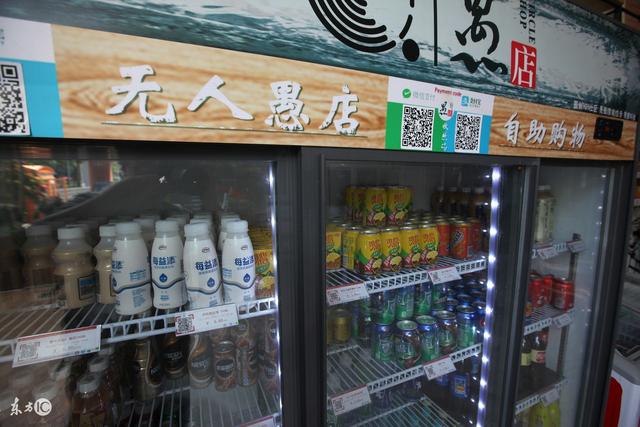In February 2016, Xiaomi's first store, Xiaomi Home, opened. In addition to mobile phones, there are also one or two hundred Xiaomi products sold in the store. By August this year, this number has increased to 156, with the goal of opening to 1,000 in three years.
Understand the past and present of new retail in one article
On August 28, 2017, Alibaba's Retail Connect announced that the first Tmall store focusing on serving the community has been officially operated in Hangzhou. This is another big new retail move after Alibaba’s unmanned supermarket and Hema Fresh.
Unconsciously, the era of e-commerce talking about heroes has quietly come to an end, and new retail has become a high ground for many bigwigs to compete for. Organize new products, develop new business formats, create new environments, apply new technologies, and integrate new business formats. New retail experiments are blooming everywhere in China at an unprecedented speed.

Why new retail? What is new retail? What is the future of new retail?
The dilemma of online and offline is the reason for the emergence of new retail
To explain these three questions, we might as well take the time spacecraft to return to the eve of the explosive development of e-commerce.
At that time, offline physical stores that had been popular for decades inevitably showed signs of fatigue. Poor product quality, few consumption choices, poor service experience and high operating costs plagued almost all merchants. In the market environment where commodity circulation, information circulation and capital circulation are limited, the acquisition cost of high-quality and multi-category products is very high, so that sub-products, counterfeit goods and old goods are rampant; in a relatively closed competitive environment, the initiative of improving merchants' service awareness is uncertain, and it is even the only business strategy of some merchants; in the abnormally popular real estate market, working for landlords has almost become a nightmare for most physical merchants. Under such circumstances, merchants need new breakthroughs.

Different from offline physical stores that are in trouble, e-commerce has placed market supply and consumer demand in an accessible world for the first time, breaking the boundaries of time and space, allowing merchants and consumers across the country to freely match their needs, ignoring the opacity of information and insufficient competition, presenting a great era of survival of the fittest.
Consumers can buy products and services they thought of and unexpectedly, and give good reviews to those who are good, and bad reviews to those who are bad, and have complete consumer autonomy; as long as merchants have good products and marketing sticks, relying on the agglomeration effect of the Internet, no matter how niche your products are or how remote your origin is, they can almost achieve explosive growth. Such a virtuous cycle causes the market, merchants and platforms to grow simultaneously. Whether it is the success of a platform like Taobao or the miracle of a brand like Xiaomi, it is inevitable in that era.
However, as the traffic dividend is exhausted, and the opportunities brought about by insufficient matching of market supply and consumer demand are divided, it is like a cycle of fate, and online stores are in the same dilemma as offline physical stores. With the gradual rise of the new middle class, consumption upgrades are inevitable, and better products, better services and more expensive traffic are spurring all online merchants. In the first half of 2017 alone, there were deaths including Green Box, Bolan Home Textiles Tmall Store, JD Cool Shop, and Zhisai.com.

Due to the impact of e-commerce, offline physical stores are also undergoing their own difficult transformation. Data from China Business Industry Research Institute shows that from the first quarter of 2016 to the first quarter of 2017, the proportion of e-commerce in total retail sales of consumer goods hovered between 11% and 13%. This means that more than 80% of the remaining transactions occur offline. Both online and offline have reached their own bottleneck period, and exploring new business opportunities in the integration of the two has become a choice for merchants.
The core problem solved by new retail is still the supply and demand problem
At the 2016 Hangzhou Yunqi Conference, Jack Ma proposed the concept of new retail. A year has passed, and the appearance of new retail has gradually become clear. The so-called new retail is actually a data-driven pan-retail form centered on consumer experience. It integrates supply chain logistics, new technologies, and new finance, and creates a new consumption format with multiple consumption scenarios and multiple shopping options.

Compared with traditional retail, what new retail is actually doing is to sort out traditional retail and reshape traditional retail, and use big data to drive the upgrade and transformation of traditional retail. The fundamental problem solved by new retail is still the supply and demand problem, but this time the entry point is online and offline integration, and the connection point is supply chain logistics, big data, new technology and new finance.
New retail is like a line, linking the production, sales and consumer ends, in order to achieve less loss, higher efficiency, better service and higher profits.
The future of new retail lies in the exploration of people's value
It is not just selling goods or having fun, but integrating several highly matched consumer needs to provide consumers with a more valuable consumer experience.
Just like Hema Fresh is regarded as a model of new retail because of its integration of multiple scenarios (supermarket + catering + convenience stores + vegetable market + e-commerce + logistics), the future of new retail lies in building a sales space based on scenario positioning. The retail industry will eventually develop into a new retail model that is aimed at all online and offline customers, providing omnichannel, full categories, full time periods and full experience.
Thank you for your attention and support to Laogao E-commerce Club . Please indicate the source of the reprinting website www.shxuanming.net
Click to register to apply to join the well-known e-commerce network - Laogao E-commerce Club. Any merchants from all over the country, Tmall merchants, Taobao Crown Store, Jinguan Store, and other e-commerce platform merchants can apply to join!






![#Laogao E-commerce Newsletter# [E-commerce Evening News on July 13]](/update/1519722543l029041880.jpg)

![#Laogao E-commerce Newsletter# [November 26 E-commerce Evening News]](/update/1634637709l862528272.jpg)

 EN
EN CN
CN
